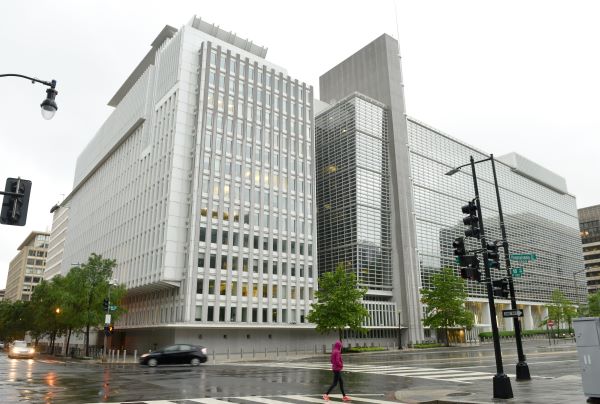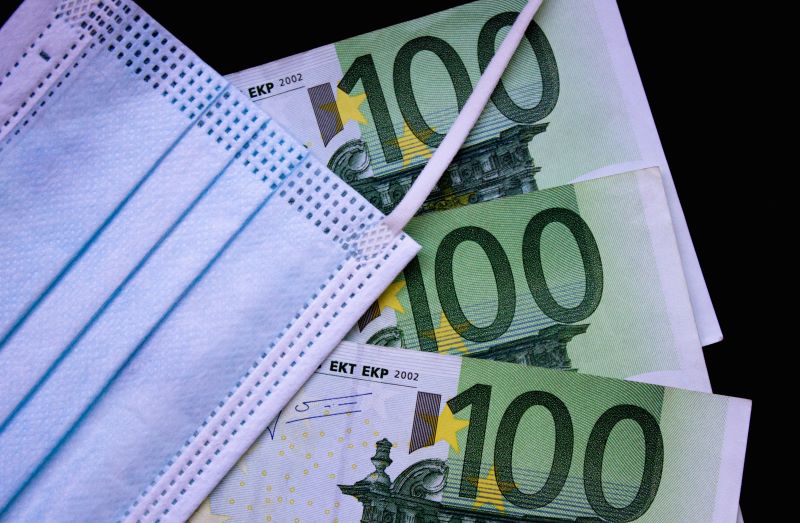Recommended
World Bank budget support projects throughout the COVID-19 global health emergency contain significant policy conditionality. On average, each budget support program required the recipient government to implement 8 policy reforms to secure funding -- a reasonable constraint in “normal” times but at odds with the twin imperatives of speed and flexibility in crisis times. In addition, over two-thirds of the World Bank budget support reform conditions were not directly relevant to the COVID-19 crisis. Instead, they focused on a longer-term reform agenda. This puts the World Bank out of step with the International Monetary Fund (IMF) which has routed a significant portion of its COVID-19 financing through programs with little to no conditionality. It may also help explain the absence of a surge in budget support since the onset of the global pandemic since onerous reform conditions might discourage governments from requesting the instrument. Crucially, it also raises questions around the effectiveness of how the World Bank is using budget support operations as a crisis response tool. With the COVID-19 emergency far from over for most of the world, the World Bank should focus on providing fast-disbursing programs with lighter policy conditions that are concentrated on mitigating the crisis at hand.
Box 1. World Bank budget support 101
Development policy financing (DPFs) is the World Bank’s general budget support instrument. DPFs provide governments with non-earmarked funds in the forms of loans, credits, grants, or guarantees. DPFs are conditioned on the government implementing a series of agreed policy reforms known as “prior actions” which can support a range of objectives from disaster response to fiscal management. In recent years, the average number of prior actions has gone down from roughly 11 in 2005 to 8 in 2015 through today.[1] All World Bank clients are eligible for DPFs and the Bank’s decision to extend budget support is based on an assessment of the government’s institutional and policy framework, its macroeconomic policy framework, and its commitment to, and ownership of the reform program.
What is the “right” level of crisis conditionality?
Budget support is an essential crisis finance instrument. Unlike project loans, which tend to disburse over multiple years, budget support provides much faster cash that can serve as a financial lifeline for a government faced with an exogenous shock and/or a national emergency. For this reason, budget support operations tend to increase during crisis periods.
But there is a mounting body of evidence around the limitations of conditionality during times of crisis. This is especially true if the conditionality is not directly related to the crisis at hand, which can impede the effectiveness of the budget support program. According to a Meso Evaluation by the World Bank’s Independent Evaluation Group (IEG), Maximizing the Impact of Development Policy Financing in IDA Countries, in times of crisis budget support operations focused on “mitigating the impact of shocks by adapting designs tend to be more successful”. The report – which reviewed 175 IEG-rated budget support programs (“DPFs”) between FY09-17, found that “many unsuccessful operations are overwhelmed by the effects of shocks even if they support reforms that had been deemed consistent with medium term government priorities prior to the respective crisis.”[2] In other words, budget support loans that adapt to support the government’s crisis policy response framework yield better results than operations with conditions that seek to achieve longer-term policy goals. An independent evaluation of the Asian Development Bank’s (AsDB) Policy Based Lending (“PBLs”, the AsDB’s term for budget support) from 2008-2017 similarly found that “the use of conventional PBL in response to crises promoted complex reforms and the lack of progress on these often delayed disbursement.”[3]
Evidence from the Global Financial Crisis (GFC) suggests many World Bank DPF policy conditions were focused on the immediate crisis. According to an IEG evaluation “in most countries with severe financial institution crises [during the GFC], the Bank performed well with regard to quality of diagnosis and relevance of program design, for both the crisis and recovery phase”.[4] Moreover, policy reforms supported by the DPFs often paralleled the reforms agreed under an arrangement with the IMF. But the report also finds that this was not systematically the case and that “Bank support tended to focus on the medium-term agenda, often on process-related and incremental reform.” The evaluation concludes that “to design and implement a meaningful program of policy reforms requires time, and the DPFs prepared during the crisis could at best support reforms already under way. A crisis loan vehicle focused on short-term fiscal support without the need to present reforms unrelated to the crisis as justification may have been more appropriate.”
Non-crisis conditionality dominates World Bank pandemic budget support
Throughout the COVID-19 crisis less than a third of policy reform conditions in World Bank DPFs focused on COVID-19 crisis response measures.[5] Only 6 budget support operations out of the 83 that we reviewed had the entirety of their prior actions focused on the COVID policy response spanning multiple affected sectors, from unemployment insurance to healthcare. The average operation contained around 8 prior actions, with 2-3 of these focused on COVID. Non-COVID related reforms covered a wide gamut of sectors, from the business environment, to fiscal management, to climate change policies.
Figure 1. % of Budget Support with COVID-related prior actions (Apr 2020 - Mar 2021)
Overall, the lack of a COVID-focused policy agenda tended to be more acute for IDA countries. Only 25 percent of prior actions in IDA DPFs were COVID-related, compared to 39 percent for IBRD programs. These findings are not entirely surprising: reform conditionality tends to be heavier for lower capacity countries who lack track records managing budget support operations. In addition, many IDA countries also tend to have IMF programs with more extensive conditionality.
Figure 2. COVID-related conditionality: IDA v IBRD
A look into how policy conditionality evolved over the 12-month period does reveal a progressively more focused pandemic response from IDA. The proportion of COVID-related prior actions in IDA increased significantly, from only 17 percent in the first six months of the crisis, to 41 percent in the second half of the period. Surprisingly, the ratio of IBRD DPFs with COVID-related prior actions experienced an inverse trend and declined to 35 percent in the second half of the period from 42 percent in the first half (i.e., budget support loans included more non-COVID-related policy conditions as the pandemic intensified). Many of the budget support operations would have been designed prior to the COVID pandemic which could explain why non-COVID conditionality declined for IDA over time. But it does not explain why non-COVID conditionality increased for IBRD countries.
The World Bank and IMF have taken different approaches to conditionality. In contrast to the World Bank, the IMF has channeled around 80 percent of its crisis finance through no or limited conditionality programs. There are also instances where the IMF temporarily waived conditionality around fiscal reforms, but the World Bank urged countries to stay focused on fiscal and debt targets.
Figure 3. COVID-related prior actions ratio compared to IMF program type
There also appears to be little interplay between IMF program conditionality levels and the World Bank’s. We looked at whether World Bank conditionality varied for countries based on whether they had an IMF program with conditionality, limited conditionality, no conditionality, or did not have an IMF program at all. We found that budget support operations in countries with IMF programs featuring conditionality or limited conditionality tended to have a slightly lower proportion of COVID-related conditions (27 percent of prior actions) in their Bank programs. In contrast, World Bank DPFs in countries with more flexible IMF programs or no IMF program had slightly higher proportions of COVID-related policy conditions (between 44 and 30 percent of prior actions). In addition, World Bank budget support operations averaged 8 prior actions regardless of whether the country had a conditional, limited conditionality, no conditionality IMF program, or no IMF program at all.
Box 2. Examples of budget support projects focused on COVID-19
Côte d’Ivoire COVID-19 Emergency DPO – $300 M, approved February 2021
Prior actions include:
- Government to temporarily provide support for workers and enterprises of the informal sector affected by the COVID-19 crisis;
- Government to implement a transparency framework around governance of COVID-19 Special Funds;
- Government to simplify import procedures for medical equipment;
- Government to launch an emergency liquidity for SMEs.
Accelerating India's COVID-19 Social Protection Response Program - $750 M, approved May 2020
Prior actions include:
- Government to approve the provision of free food rations for a three-month period;
- Government to contribute 24 percent of monthly wages for low-wage workers in small and medium enterprises for three-month period;
- Government to establish a special health insurance scheme for health workers providing essential care/medical services to COVID-19 patients.
The World Bank’s DPF Policy affords it significant flexibility to deploy the instrument with greater speed and with less conditionality during times of crisis.[6] But we found that the Bank made moderate use of these flexibilities during the period we reviewed. For instance, supplementary financing is a useful instrument for providing countries additional fiscal support fast by supplementing project funding without new conditionality. But we found that only 9 out of the 83 projects we reviewed were supplementary financing. The Bank also has a Special Development Policy Financing instrument for IBRD-eligible countries that are approaching or are in a crisis, but this instrument does not appear to have been used throughout the period we reviewed.
Contingent financing instruments, particularly Catastrophe Deferred Drawdown Options (CAT-DDOs) stand out as an area of relative uptake. A CAT-DDO is a contingent credit line that a country can take out in the anticipation of a crisis and provides immediate liquidity if the government declares a national emergency. To obtain a CAT-DDO a country must maintain an adequate macroeconomic policy framework and a satisfactory disaster risk management program, but disbursements are not contingent on additional policy measures. Throughout the pandemic, several countries have activated pre-existing CAT-DDOs or restructured them to include health risks.[7] The Board has approved three additional arrangements.
Conclusion
Focused policy action is critical in a crisis. To date, the policy framework advanced by World Bank budget support operations appears insufficiently tailored to the needs of the COVID crisis. With the pandemic far from over, financing conditions could shift rapidly and bring many governments knocking on the World Bank’s door for budget support. The World Bank should rethink its approach to crisis response budget support operations going forward and pursue a policy agenda that directly advances governments’ pandemic response and recovery frameworks. The medium term can wait, the pandemic will not.
Annex 1. Methodological approach
Our analysis is based on the World Bank’s Project List dataset,[8] which includes high-level information on all World Bank projects to date. We looked at Development Policy Financing operations – World Bank parlance for budget support – dating from April 1, 2020 to March 31, 2021.[9] We then manually scraped all prior actions from the program documents for 83 projects and determined whether each prior action was directly relevant to the COVID crisis.
We categorized any prior action intended to directly address challenges related to the health or economic fallout of the pandemic as “COVID-related”. These fell into broadly three categories: health (i.e., shoring up health system, vaccine rollout, purchasing medical equipment, etc.), support to the most vulnerable (i.e., expanded unemployment, scaling up cash transfer program, nutrition support, etc.) and financial lifelines to the private sector (i.e., emergency liquidity support to firms and banks). Prior actions that supported the medium-term reform agenda and policies that were not directly related to addressing the health, social, or economic fallout of the pandemic were classified as “non-COVID-related” (e.g., banking sector reform, fiscal reforms, climate policy, regulatory reform, public financial management, etc.).
We classify as IBRD support that was given to IBRD clients, including some budget support operations for India that were partially financed through IDA. We classified as IDA support for all IDA clients, including funding for blend countries that was partially financed through IBRD.
For countries receiving World Bank programs we looked at their relationship with the IMF and whether they had a program with conditionality, limited conditionality, or no conditionality. We determined whether the IMF program type had a relationship to COVID-19-related conditionality in World Banks DPFs. We categorized Rapid Financing Instruments (RFIs) and Flexible Credit Lines (FCLs) as no-conditionality programs. Limited conditionality includes Rapid Credit Facilities (RCF) and Precautionary Liquidity Lines (PLLs). Stand-By Arrangements (SBAs), Extended Credit Facilities (ECFs), Extended Financing Facilities (EFFs) and Stand-By Credit Facilities (SCFs) were classified as conditional programs. If a country had both a conditional and a limited conditional or unconditional program, we classified it under the most conditional category applicable.
See our full list of COVID-19 prior actions see our database here.
[3] https://www.adb.org/sites/default/files/evaluation-document/301291/files/ce-pbl-performance-results-and-issues-design.pdf
[4] https://openknowledge.worldbank.org/bitstream/handle/10986/21340/672830WP0Box3600crisis20full0report.pdf?sequence=1&isAllowed=y
[5] See Annex 1 for our methodology.
[9] We chose April 2020 as the starting point since it was the first month in which COVID-related prior actions began to appear in World Bank budget support operations.
Rights & Permissions
You may use and disseminate CGD’s publications under these conditions.







